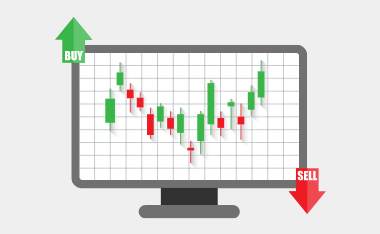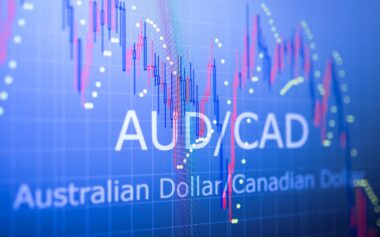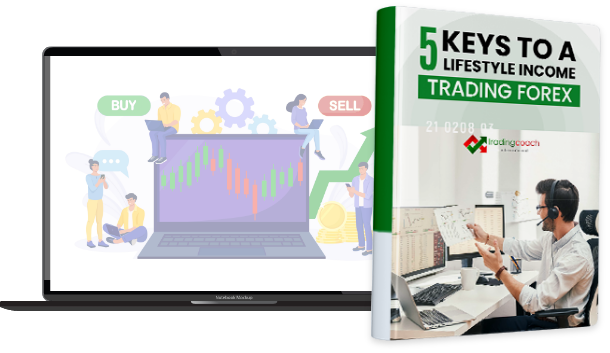Halfway Through 2025: Is Your Trading Plan Serving You?

Reflecting on the First Half of 2025
As we reach the midpoint of 2025, Australian forex traders must pause and reflect.
It’s time to ask: Is my trading plan working for me? This inquiry goes beyond mere profit and loss.
It’s about whether your strategy has adapted to the market’s changes and if it’s ready for the rest of the year and 2026.
The markets have been unpredictable, with volatility swinging wildly.
Economic surprises, shifting central bank policies, and global uncertainty have reshaped the forex scene.
While these changes may have caught traders off guard, they also offer an opportunity for adjustment before the second half of the year.
The Australian Economic Landscape and Its Impact on Forex Trading
Australia’s economy has slowed down in 2025, with a 0.2% GDP rise in the March quarter.
The RBA cut rates by 25 basis points in May, lowering the cash rate to 3.85%.
This shift suggests further rate cuts, potentially lowering the rate to around 2.85% by early 2026.
Consumer confidence is weak, public investment has decreased, and climate-related disruptions have added pressure.
The Australian dollar is highly sensitive, influenced by domestic data, global risk sentiment, Chinese commodity demand, and interest rate expectations.
Trading the AUD/USD, AUD/JPY, or AUD/NZD requires anticipating macroeconomic shifts.
Currency markets often move before data becomes public.
Staying ahead requires awareness of local indicators and international signals, including those from the US, China, and the UK.
Is Your Strategy Keeping Up with the Market?
The forex market is constantly evolving.
A strategy that worked in 2023 or 2024 might now be outdated.
Traders should ask, “Is my strategy relevant?” not just if it’s profitable.
Let’s explore this further.
Performance Metrics
Analyze your trades from the start of 2025.
Are you meeting profit targets? Is your win rate dropping? Are losses larger than expected?
More importantly, are you taking quality trades or forcing them due to boredom or habit?
Focus on a few key performance indicators, such as:
- Average Risk to Reward Ratio
- Monthly Return on Capital
- Maximum Drawdown
If you’re risking $50 to make $30, or seeing more losses than wins, it’s time to make changes.
This could mean adjusting your setups, trade management, or discipline.
Risk Management
With increased volatility in London and New York sessions, risk management is critical.
Traders who failed to adapt to rate-driven movement were caught out with oversized positions, weak stops, or emotional decisions.
Now is the time to reassess:
- Are you risking a consistent percentage of capital?
- Are your stops based on technical structure — or arbitrary points?
- Are you emotionally prepared to lose on any given trade?
Survival is your first priority as a trader. Profit comes second.
If your capital isn’t protected, nothing else matters.
Adaptability
Markets are constantly changing. Your trading plan must adapt to these changes.
Forcing the same breakout pattern in a consolidating market or ignoring fundamentals in a fundamentally driven environment is akin to gambling.
A good test is this: Can your strategy clearly define when to not trade?
If you don’t have built-in filters that keep you out of low-probability setups or choppy sessions, you’ll spend more time recovering from damage than compounding your wins.
Mindset, Habits and Trading Psychology: What Needs Adjusting?
Many think their edge is solely in the charts.
But by mid-year, the traders who remain in the game have built a repeatable process.
This process they can execute consistently, even on tough days.
Do you treat trading like a business or a hobby? Are you thrown off by a couple of red trades? Do you jump from one strategy to another hoping the next one will work?
Mindset isn’t just about staying positive.
It’s about staying grounded. It’s about knowing the market doesn’t owe you anything — and that your success depends on how you manage yourself, more than how you predict price.
A strong trader mindset is built through routines, boundaries, and process.
Start your day with pre-market analysis. Set alerts instead of screen-watching.
Journal your trades. Know when to stop for the day — and why.
How Major Currency Pair Traders Should Respond
If you trade major pairs like AUD/USD, EUR/USD, or GBP/USD, the interplay between interest rates, inflation expectations, and economic divergence has likely affected your results this year.
Take AUD/USD, for instance. It has been torn between weaker domestic data and shifting US expectations around the Fed’s rate path.
A single inflation print or jobs report can change the trajectory of this pair in minutes.
EUR/USD and GBP/USD have also experienced strong directional moves driven by ECB and BoE policy updates.
These moves often happen during the London and New York overlap, which can be tricky for Aussie traders managing family or work commitments.
That’s why this mid-year checkpoint is so important.
If your trading plan hasn’t been flexible enough to handle these sharp swings and fundamental reversals, it’s time to adjust — not abandon — your approach.
The Mid-Year Action Plan: Recalibrate, Refocus, Recommit
If you’re serious about trading into the second half of 2025 and want to do it more consistently, here’s a practical plan you can implement right now.
Step 1: Review Your Trading Journal
Go back over your last 50 trades. Look for patterns. Are you taking impulsive entries? Are your best trades coming at specific times of day? Are your losses tied to specific mistakes?
Get real about what’s working — and what’s costing you.
Step 2: Tighten Your Strategy
Choose one strategy and clean it up. Write it down in one page. Define your entry, your confirmation, your invalidation, your risk size, and your exit.
If you can’t summarise it clearly, you don’t understand it yet.
Backtest that one strategy across the first six months of 2025 on a 15-minute or 1-hour chart.
Look for performance in different conditions — trending, ranging, post-news. That’s how you’ll know if it’s viable.
Step 3: Build Your Weekly Trading Routine
Start each Sunday with a 30-minute market scan. Map your key levels. Set alerts on your trading platform for the zones you want to trade.
This will stop you from being glued to your screen, and give you peace of mind while living your life.
Plan your week around the big announcements — employment data, inflation releases, central bank speeches.
These events drive most of the market’s movement. Learn to trade with them, not against them.
Step 4: Set Your Guardrails
Decide on the number of trades you’re ready to take daily or weekly.
Determine your loss limit for the day. Commit to journaling each day, even without trading.
This is where your edge is forged.
Step 5: Refocus Your Why
Reflect on why you’re trading. Is it for more family time, freedom, or a second income?
Reconnecting with your ‘why’ is essential. It makes losses meaningful and turns wins into triumphs.
Wrapping Up: Make This Midpoint Count
The midpoint of the year is a reset opportunity. Don’t let it slip by. Regardless of your start, your decisions now will shape your 2025 finish.
Forex trading in Australia comes with unique challenges. Time zones, local markets, and lifestyle demands are part of it. Yet, it also offers a distinct advantage with clarity, patience, and discipline.
Your trading plan evolves with you. Use this milestone to ensure it matches your goals, strengths, and market realities.
If it doesn’t align? Be courageous enough to revise it.
Disclaimer
The information, strategies, techniques and approaches discussed in this article are for general information purposes only. The Trading Coach International does not necessarily use, promote nor recommend any strategies discussed in this article. The information in this article may not be suitable for your personal financial circumstances and you should seek independent qualified financial advice before implementing any financial strategy. The Trading Coach International is not a financial advisor and does not have AFS registration.


















